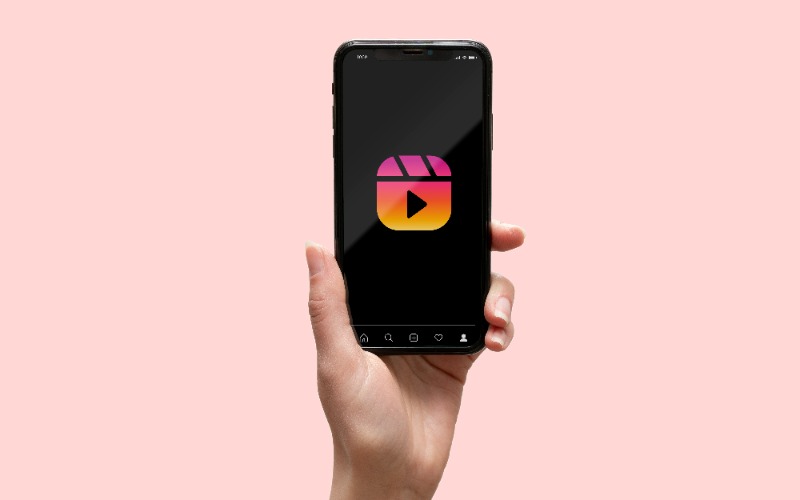Rumor has it that Reels could be breaking away from Instagram as a new standalone app.
Adam Mosseri, the U.S. Head of Instagram, was overheard discussing the potential Reels app, as reported by The Information. This move would be part of Instagram’s Project Ray—aimed to help Instagram better compete with TikTok.
It is no secret: short-form videos have taken the world by storm. They are quick, under 60 seconds, engaging, and tailored to how media is now consumed. According to Dr. Gloria Mark’s book “Attention Span: A Groundbreaking Way to Restore Balance, Happiness, and Productivity,” our average attention span is calculated to be 47 seconds on a screen, showing how short-form video psychologically aligns with our current digital behavior.
The rise of short-form videos is attributed to the 2020 COVID-19 pandemic, where users sought emotionally rewarding entertainment to break through the stillness of quarantine. TikTok offered just that: spontaneous, authentic, and relatable content. This shift pushed people further away from Instagram’s perfectly curated aesthetics—an experience that Instagram’s internal research found to be linked with increased anxiety and negative body images, as reported by the Wall Street Journal. The quest for authenticity shows that people prefer to spend time on apps that make them feel good.
Naturally, many apps have attempted to cater to this shift in media consumption. We saw Snapchat introduce Spotlight, YouTube introduce Shorts, and Instagram introduce Reels. After all, this domino effect is often seen in the tech industry, where one good idea sparks a ripple effect, weaving its way across platforms.
The fight to beat TikTok is heating up. Could this move from Instagram be the final sprint? As a non-biased Gen-Z TikTok Addict, I argue that Reels cannot stand alone simply because no real market exists for it.
But, hey, if you don’t believe me, let’s analyze it together.
Moral Mismatch
The fundamental reason why Reels won’t succeed as a standalone app is due to a moral mismatch between its content and Instagram’s original content. Users on Instagram are on the app for its original purpose, which is connecting through curated photos from people, businesses, or accounts they care about and intentionally follow.
In direct contrast, Reels, in an attempt to mimic TikTok, functions through consuming relatable content regardless of who it was posted by a socially agnostic form of media that doesn’t align with typical user behavior on Instagram.
This difference in user intent makes it hard for Instagram Reels to make sense. Studies show that around 37% of Instagram Reels users do so passively because they are looped in through what seems to be unnatural placements of Reels on feeds and the explore page.
From the get-go, Reels has felt like a feature randomly stumbled upon on the Explore page or in the feed, with no intent. Detaching Reels from Instagram will lose the guaranteed passive engagement it relies on. Even as a standalone app, Reels is still associated with Instagram, carrying its long-standing reputation entrenched in perfection, making it hard for Reels to break away and reposition itself as new.
We Have Seen This Show Before
Some people may argue that it’s Meta. After all, they’ve already successfully taken stories from Snapchat and are attempting to take short-text discussions from X (formerly Twitter). This leads many to assume Meta has the resources to become the #1 short-form video app and ultimately dethrone TikTok.
However, recent Meta track records suggest otherwise.
We’ve seen this difficulty exhibited recently with Instagram’s launch of Threads, a short-text form alternative to X (formerly Twitter). The numbers initially might argue that Threads was a huge success, as it beat the record for the quickest app to reach 100 million users. Threads failed to retain momentum, losing user base due to a lack of unique features, leaving users with no compelling reason to migrate from existing platforms like X.
Instagram has also attempted to snatch the crown in the video space, with failed attempts. In 2018, Meta launched its first attempt at a successful video app, Lasso, a short-form video platform designed to compete with TikTok (Musical.ly at the time). It was quickly shut down two years later due to a lack of a strong user base with less than 600,000 downloads. That same year, Meta introduced its second attempt, IGTV, a long-form video app to compete with YouTube. It too quickly failed because of low engagement.
As of now, Reels is within Instagram (the most popular social media app in the world) and is still struggling to compete with TikTok’s shine. Instead of Meta coming off as a competitor in the market, a standalone app comes off as a last-minute attempt for Meta to win a battle it’s already losing.
Let’s be Reels: App Fatigue!
Let’s be real—we are all tired of downloading new apps that offer nothing new! While this move from Instagram could be an attempt to declutter its app, it creates a new problem: asking users to download yet another app in an already saturated market.
As the eMarketer has calculated, the average app is deleted 5.8 days after its last use, giving Reels as a standalone app a matter of days before new users lose interest. Meanwhile, the National Institutes of Health suggests it takes 2 to 5 months to create a habit, a wide gap that works against Reels. Considering that Reels offers nothing dramatically different than other more exciting apps, users will be less likely to come back. Reels risk getting deleted from phones before becoming part of their routine.
Strategic Timing?
TikTok’s current standing in the United States might initially seem like a golden opportunity for Instagram to capitalize on the migration of United States users. However, this theory does not work in practice.
The events of the TikTok one-day ban on January 19th, 2025, show no significant increase in Reels engagement. Instead, displaced TikTok users downloaded the Chinese app TikTok alternative, Rednote. Rednote quickly reached the App Store’s top downloaded app, with over 3 million new United States users in just a week. On Rednote, the hashtag #tiktokrefugees quickly became trendy, signaling a mass collective user shift to Rednote. But when TikTok returned, the app faced a 91% download decline.
The migration raises an important question for Instagram: Why did users download a new app, instead of turning to Reels on Instagram, the most popular social media app?
The answer to that question lies in originality, or rather, the lack of it, which Reels has suffered from. Reels struggles to stand creatively, lacking the creative depth of TikTok. Capturing the public sentiment accurately, Reddit user NoneOfThisMatters_XO states: “A huge chunk of Reels is just leftover TikTok videos. It’s hilarious to me that the same people who sh*t on TikTok ‘like’ the SAME VIDEOS that end up on Reels. So now what’s Reels gonna do? No more recycled TikTok videos for them to pawn.”
This comment reflects that reels have yet to create a distinct identity. Reels cannot assume success when counting on the downfall of the app it recycles content from.
Final Scroll
As human behavior continues to evolve, so do the platforms built to serve them. Instagram’s decision to potentially split from Reels sparks more questions than it answers. What happens when a feature, initially designed to complement, is assigned to lead? Will users embrace the shift, or will they scroll past it?
In this case, Reels lacks the demand and originality needed to succeed, and making it a standalone app will only make those traits more apparent.











